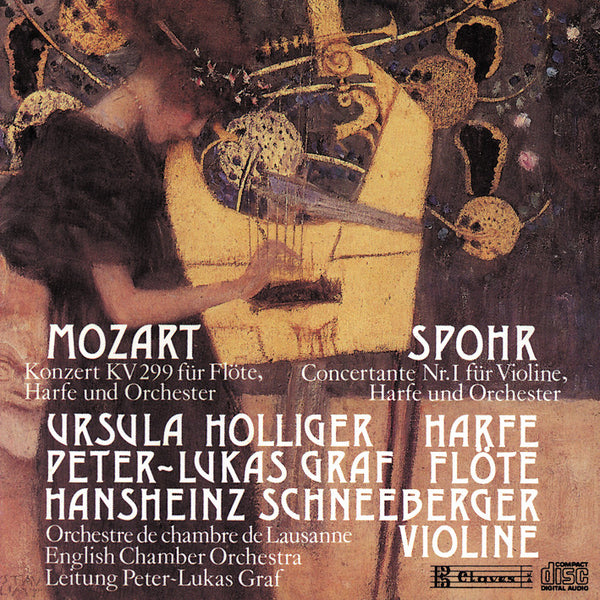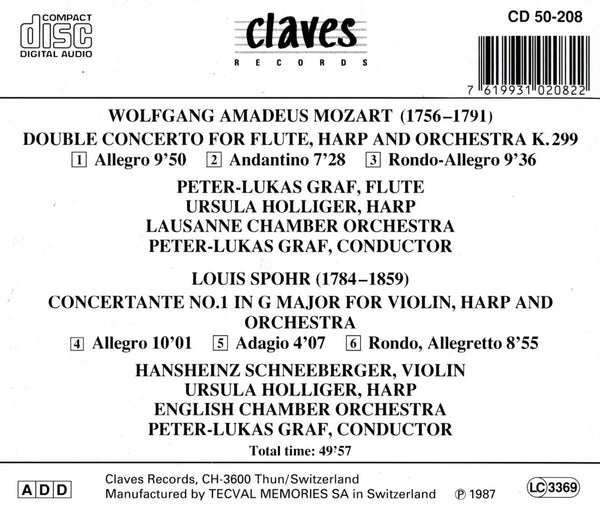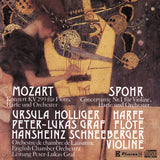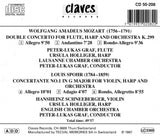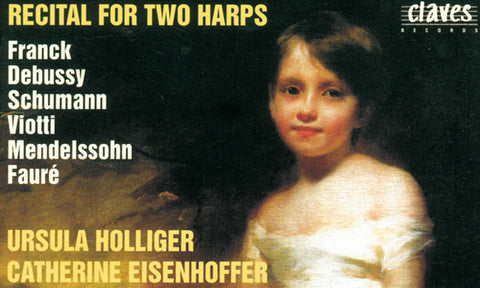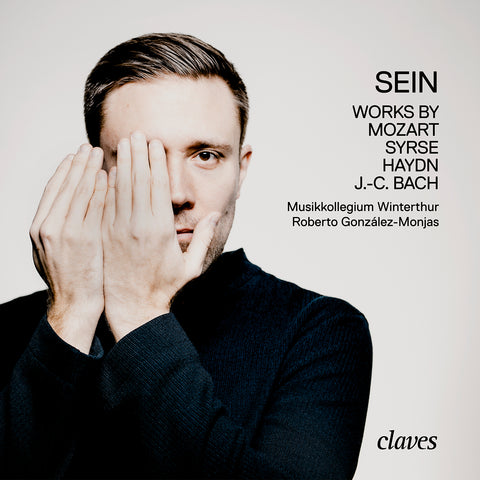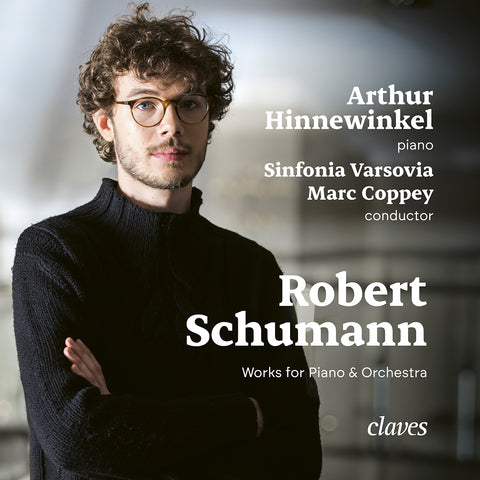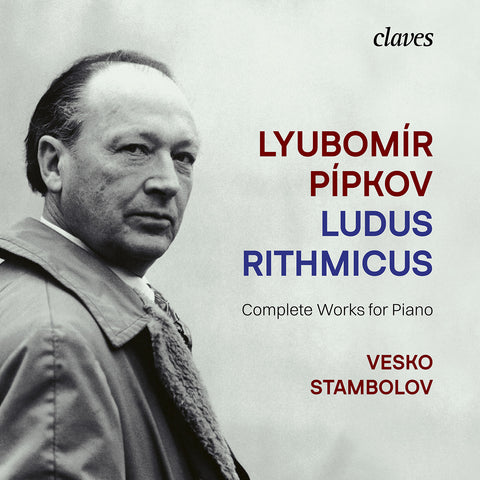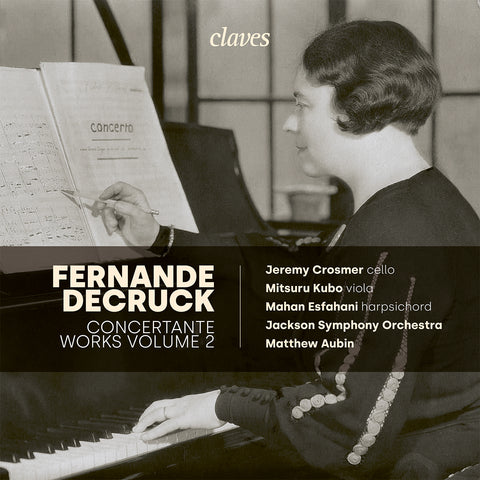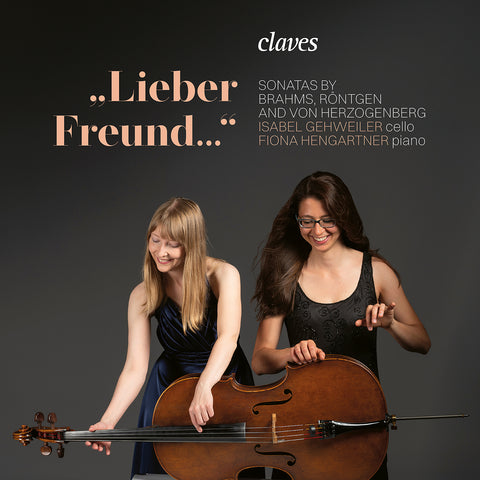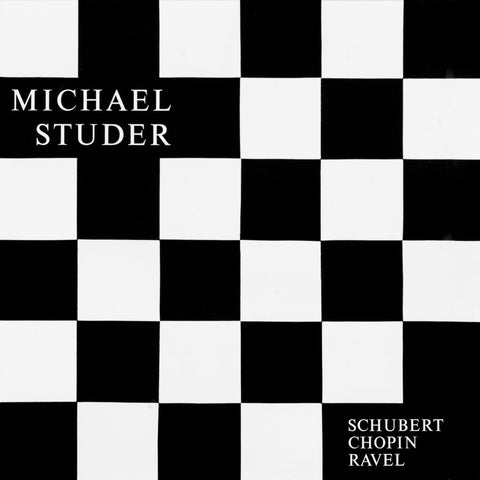(1987) Mozart & Spohr: Concertante Works
Category(ies): Concerto Debut Orchestra
Instrument(s): Flute Harp Violin
Main Composer: Wolfgang Amadeus Mozart
Orchestra: English Chamber Orchestra
CD set: 1
Catalog N°:
CD 0208
Release: 1987
EAN/UPC: 7619931020822
- UPC: 829410602969
This album is now on repressing. Pre-order it at a special price now.
CHF 18.50
This album is no longer available on CD.
This album has not been released yet. Pre-order it from now.
CHF 18.50
This album is no longer available on CD.
This album is no longer available on CD.
VAT included for Switzerland & UE
Free shipping
This album is now on repressing. Pre-order it at a special price now.
CHF 18.50
This album is no longer available on CD.
This album has not been released yet.
Pre-order it at a special price now.
CHF 18.50
This album is no longer available on CD.
This album is no longer available on CD.
MOZART & SPOHR: CONCERTANTE WORKS
Although Mozart was fond neither of the flute nor the harp (he once even said in a letter that he couldn’t stand the flute), he did succeed in creating a delightfully charming work abounding in beautiful melodies. This concerto also provides flutists and harpists, of whom Mozart otherwise was so negligent, with the opportunity to display their brilliant virtuosity. The fact that the solo instruments also play in the orchestral tuttis is an indication of this composition’s roots in the concerto grosso. It is, however, much more closely related to the symphonie concertante. The widespread but rather short-lived popularity of the symphonie concertante (more concerto than symphony) was based on its light and ebullient character which particularly appealed to the audiences in Paris.
Louis Spohr, who was to play a central role in European musical life as a composer, musician, conductor and teacher well into the 19th century, had fully developed his unique, individual style by 1810, the year in which Schumann and Chopin were born. Spohr’s music unites refined sentimentality, pathos and rich textures and harmonies with a classical conception of form, an ideal to which Spohr adhered throughout his life. During the early years of his career Spohr concentrated primarily on instrumental works: concertos, sonatas, duos, etc. He gradually expanded his sphere of activity to include all genres, from opera to oratorio, from symphonies to song. The numerous works which he created over the course of more than half a century retained the esthetic ideals that characterized his early period and, despite their romantic tendencies, remained firmly bound by a conservative concept of form.
This formal conservatism, which isolated Spohr from the revolutionary changes introduced by Beethoven, Wagner and Berlioz, is contrasted by his extraordinary flair for instrumental experimentation. No other romantic composer showed such a proclivity for new instrumental combinations: a concerto for string quartet and orchestra, a symphony for two orchestras, double quartets” for two string quartets, important works for clarinet and, above all, numerous works for harp. The many works which Spohr wrote between 1805 and 1811 for his wife, the famous harpist Dorette Scheidler, represent the most important contribution in the 19th century to the repertoire of this quintessential “romantic” instrument.
Spohr composed the Concertante No. 1 in G Major for Violin, Harp and Orchestra in Gotha in 1806. Although frequently performed by the composer and his wife, this work was never published; the unusual combination of violin and harp ceased to be an attractive proposition for his publisher after Dorette’s premature death in 1812. This early composition foreshadows many romantic tendencies. It anticipates many of the colors from Weber’s “Der Freischütz” as well as Mendelssohn’s and Schumann’s harmonies. Particularly astounding is the masterly instrumentation, as well exemplified in the slow movement. The simple, rather rigid song form is given a completely new character through its unique, perfectly complementary instrumentation.
Heinz Holliger
Translation: Mark Manion
(1987) Mozart & Spohr: Concertante Works - CD 0208
When Wolfgang Amadeus Mozart, accompanied by his mother, arrived in Paris in 1778, he was very optimistic about winning recognition and perhaps even a post which would free him from his duties which he so loathed at the archbishop’s court in Salzburg. Contact with influential personages was therefore very important. One of his most important contacts was with the Duke of Guines, a music-loving diplomat and amateur flutist. Mozart enthusiastically reported to his father in a letter dated 14 May that “the Duke of Guines plays the flute splendidly, and his daughter, who is studying composition with me, is an excellent harpist.” The duke stood in favor with Queen Marie—Antoinette, who was expecting a child at the time. Mozart had thus hoped to receive a commission for the celebration of the royal birth. In order to gain the duke’s goodwill, Mozart wrote the Double Concerto for Flute and Harp K. 299. To his great disappointment, however, not only did Mozart not receive a commission, but the duke was also content merely to offer a paltry sum for the concerto, an offer which Mozart indignantly refused.
Although Mozart was fond neither of the flute nor the harp (he once even said in a letter that he couldn’t stand the flute), he did succeed in creating a delightfully charming work abounding in beautiful melodies. This concerto also provides flutists and harpists, of whom Mozart otherwise was so negligent, with the opportunity to display their brilliant virtuosity. The fact that the solo instruments also play in the orchestral tuttis is an indication of this composition’s roots in the concerto grosso. It is, however, much more closely related to the symphonie concertante. The widespread but rather short-lived popularity of the symphonie concertante (more concerto than symphony) was based on its light and ebullient character which particularly appealed to the audiences in Paris.
Louis Spohr, who was to play a central role in European musical life as a composer, musician, conductor and teacher well into the 19th century, had fully developed his unique, individual style by 1810, the year in which Schumann and Chopin were born. Spohr’s music unites refined sentimentality, pathos and rich textures and harmonies with a classical conception of form, an ideal to which Spohr adhered throughout his life. During the early years of his career Spohr concentrated primarily on instrumental works: concertos, sonatas, duos, etc. He gradually expanded his sphere of activity to include all genres, from opera to oratorio, from symphonies to song. The numerous works which he created over the course of more than half a century retained the esthetic ideals that characterized his early period and, despite their romantic tendencies, remained firmly bound by a conservative concept of form.
This formal conservatism, which isolated Spohr from the revolutionary changes introduced by Beethoven, Wagner and Berlioz, is contrasted by his extraordinary flair for instrumental experimentation. No other romantic composer showed such a proclivity for new instrumental combinations: a concerto for string quartet and orchestra, a symphony for two orchestras, double quartets” for two string quartets, important works for clarinet and, above all, numerous works for harp. The many works which Spohr wrote between 1805 and 1811 for his wife, the famous harpist Dorette Scheidler, represent the most important contribution in the 19th century to the repertoire of this quintessential “romantic” instrument.
Spohr composed the Concertante No. 1 in G Major for Violin, Harp and Orchestra in Gotha in 1806. Although frequently performed by the composer and his wife, this work was never published; the unusual combination of violin and harp ceased to be an attractive proposition for his publisher after Dorette’s premature death in 1812. This early composition foreshadows many romantic tendencies. It anticipates many of the colors from Weber’s “Der Freischütz” as well as Mendelssohn’s and Schumann’s harmonies. Particularly astounding is the masterly instrumentation, as well exemplified in the slow movement. The simple, rather rigid song form is given a completely new character through its unique, perfectly complementary instrumentation.
Heinz Holliger
Translation: Mark Manion
Return to the album | Composer(s): Wolfgang Amadeus Mozart | Main Artist: Ursula Holliger







